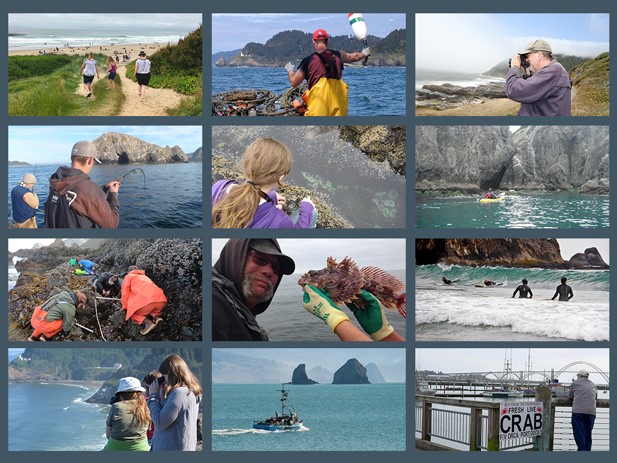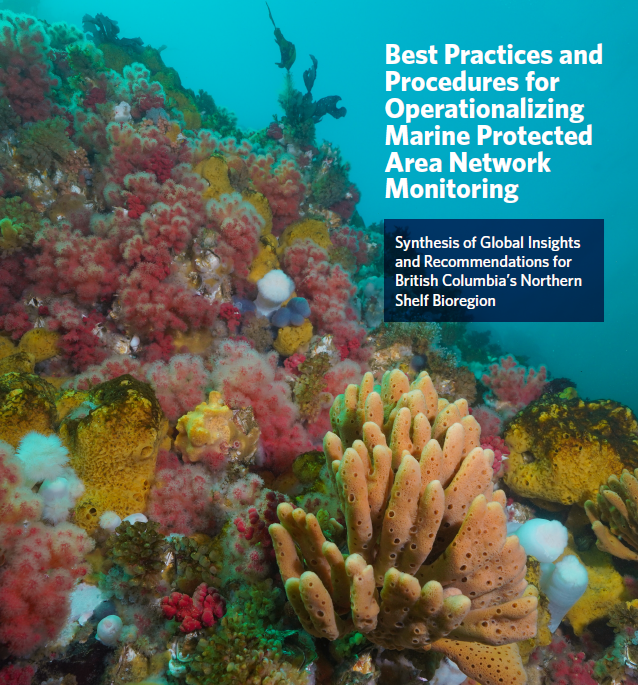Our human dimensions program was recognized as a global leader in human dimensions monitoring in a recent publication by Nature United, Canada.
The publication summarizes global insights on best practices and procedures for Marine Protected Area (MPA) network monitoring. It informs British Columbia’s planning efforts in the Northern Shelf Bioregion – a priority location for a new MPA network. The publication includes a case study of the Oregon Human Dimensions Program research over the last decade, written by former Marine Reserve Program Leader Cristen Don.
Marine Reserves Program staff previously shared lessons learned from the Oregon experience with Canadian colleagues during two expert workshops, which led to a request for an Oregon case study. Former Marine Reserve Program Leader Cristen Don stepped in to author the case study to meet the tight deadline.
These efforts led to the inclusion of Oregon examples throughout the publication: lessons learned from early stages of MPA formation and monitoring design, baseline monitoring, monitoring indicators, indicator selection process, data collection, and communications and reporting.

Photo: A selection of the communities of place and communities of interest monitored by the ODFW Marine Reserves Human Dimensions program.
The main contributions from our human dimensions program listed in the report were:
• An Experienced Human Dimensions Scientist Directing Research is Critical to Success
Having a senior human dimensions scientist on staff with experience in applied research programs was critical to establishing and conducting a robust human dimensions research program. This level of expertise was needed to coordinate partners and ensure products provided to ODFW were applicable and useful to resource managers and decision-makers.
• Look Beyond Marine Institutions to Find Human Dimension Academic Research Partners
Academic researchers with expertise in the human dimensions of natural resources are often not housed within marine institutions. The majority of our academic social science research partners were in departments/schools of Tourism and Recreation, Forestry, Public Policy, Anthropology and Social Psychology
• Long-term Collaborations are Key to Applied Research and Long-term Monitoring
Building long-term relationships with research partners helped ensure continuity in datasets. Continuity is key in long-term monitoring and in producing meaningful contributions to an applied research and management program.
• Working With Partners is Often Essential to Success Yet Has Challenges
Partners bring vital capacity, funding, and expertise essential for successfully creating marine protected areas. Yet partners often have additional obligations, mandates, and incentives beyond supporting marine reserve implementation. For example, academic partners may be incentivized to focus on novel research methods or publish findings in a peer-reviewed journal which may not always be pertinent or timely to an applied research and management program.
• Core Funding and Staff are Necessary for Attracting Additional Resources
Core funding and staff were critical to attract partners and additional research funds. State funding and staff demonstrate a commitment by the state, allowing our program to provide seed money to partners for collaborative projects. Partners can then leverage ODFW funds to provide sufficient match for grants and other funding opportunities.
• Research that Brings a Voice to Impacted Individuals is Important
Based on our experience from the synthesis report, we found that qualitative interview research projects helped build trust with individuals perceived to be negatively impacted either economically or socially by the reserves. These projects uncovered impacts that would otherwise not be detected by other quantitative methods and provided a way for individuals or small groups to share their lived experiences and feel heard. This research was largely carried out by partners in anthropology. See our Reserves News post on additional lessons learned from qualitative interviews with commercial and charter fishers.
The lessons learned and shared in the publication stem from the results and takeaways of our program’s 10-year Synthesis Report. That report is a comprehensive overview of the first 10 years of Marine Reserves implementation in Oregon.
Our program spent the last decade casting a wide net to detect and describe the different social, economic, and cultural impacts of marine reserves on regions, communities, social groups, and individuals. This research let us understand who was being impacted during implementation and how those individuals were affected.
After 10 years of research, we now know what to monitor, how to conduct our monitoring program, and where these marine reserve effects occur across spatial scales, communities of interest, and communities of place.
